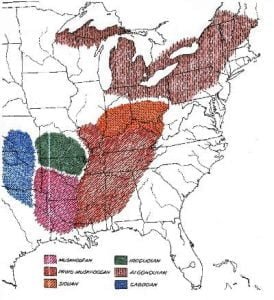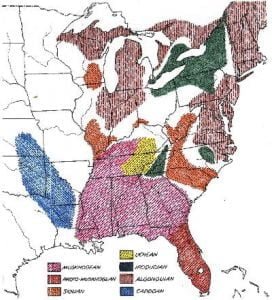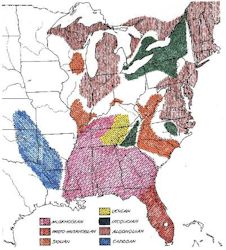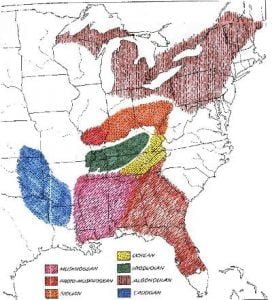Tribal Migrations East of the Mississippi
The map entitled “Linguistic Families of American Indians North of Mexico”, by J. W. Powell, issued by the Bureau of American Ethnology, Smithsonian Institution, some years ago and several times revised and reprinted, indicates the position of the various groups of tribes when they first became known to Europeans. The map, as its title implies, includes the entire North American continent north of Mexico, but in the present paper, only that portion bordering on the lower Mississippi, and eastward to the Atlantic coast, will be considered.





